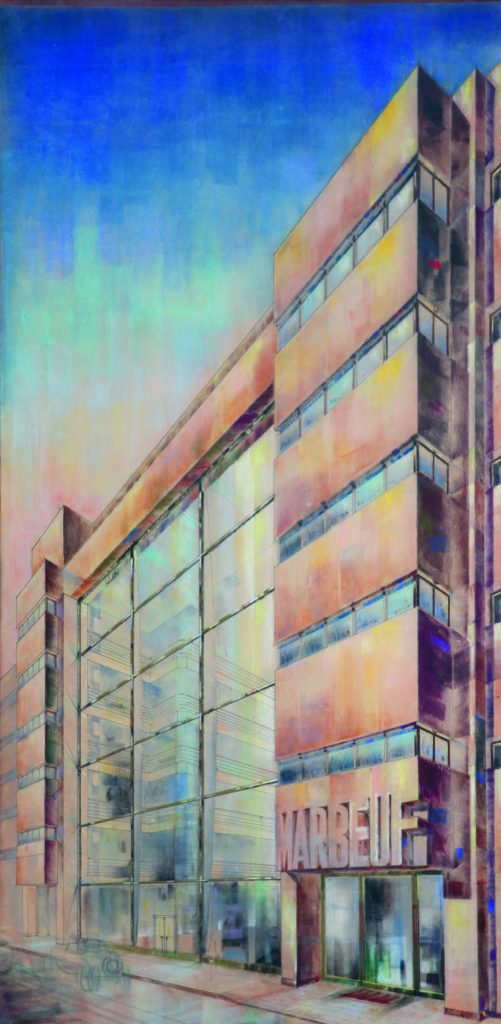In the West-oriented educational setting of the 1920s, as part of the Ministry of Education’s initiative to send successful students abroad to help them gain experience, Nazimî won first place in the first European architectural competition organized by the Academy of Fine arts in the 1927-28 term and won the award of traveling to Paris, followed by Berlin. A traditional part of the education of the Turkish intellectual elite since Ottoman times, this European experience was made possible for Nazimî as part of the scholarship he had won.
Despite the prevailing art deco movement in Paris, Nazimî was more interested in modernism, which was considered avant-garde at the time. Nazimî returned to Turkey in 1930 to complete his military service. In 1931, he moved to Berlin in 1931 once again on a grant. He was admitted to leading German architect Hans Poelzig’s “Meister Atelier” (workshop-school). While fully embracing modernism he was drawn to in Paris, he grew closer to the international avant-garde line and completely detached himself from the academic eclecticism given through stylistic experimentations. While fully embracing modernism he was drawn to in Paris, he grew closer to the international avant-garde line and completely detached himself from the academic eclecticism given through stylistic experimentations. Nazimî Yaver’s drawings this period are all mounted on art déco pass-partouts of different colors. Marked as “Amsterdam, Berlin, Paris Modern Studies,” each one of the drawings bear the signatures of two architects and feature the following inscription: “Ö. Nazimi Yaver, Arsitekt – Meister Atelier Professor Hans Poelzig, Technische Hochshule und Akademi der Kunst, Berlin, Charlottenburg.”
The drawings in which Nazimî Yaver theorized modernism on paper during his Berlin period approaches design issues solely as educational experiments. The works do not assume any social missions. They are not speculative. Fantasy never evolves into utopia, carry any intentions of social critique through utopist or dystopian provocations and engage in alternative future constructs. The proposals are functional and realistic.
For more information about our exhibition, please visit our web site!
